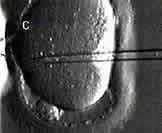Male Infertility Treatment
Costs for fertility testing and treatments:
- About 25% of all infertility is caused by a sperm defect and 40-50% of infertility cases have a sperm defect as the main cause, or a contributing cause.
- It can be hard to know whether the sperm problem is the only cause, or just a contributing cause to the fertility problem.
- Part of the problem is that numbers are just numbers. We know that men with low sperm counts can sometimes have children – and some men with normal sperm counts can be infertile.
- If the sperm count or motility is extremely low, we usually assume this is the cause of the fertility issue. If the count or the motility is slightly low, it could be a contributing factor, but the sperm might not be the only fertility issue in the couple. There would often be female fertility problems also.
- What matters is not really how many sperm there are, or how fast the sperm swim – but whether they can fertilize the female partner’s eggs. This is really a biochemical issue working at the molecular level. Looking at the little swimmers under the microscope is not necessarily an accurate way to assess their ability to fertilize eggs.
- However, a semen analysis is still the best test that we have to assess male fertility at this time.
- Male infertility tests
ICSI procedure, intracytoplasmic sperm injection is used for many sperm issues
- ICSI needle is inside egg, sperm is being injected in to the egg
- Holding pipette at far left is holding egg steady
- IVF with ICSI is very effective for male infertility – if we have some motile sperm
Low Sperm Motility – Male Fertility Problems – Sperm Motility
Chicago fertility clinic offers effective treatment for male infertility:
- Sperm motility is an important part of the semen analysis – male fertility testing to check for male infertility
- The three main components of a semen analysis are:
- Count (concentration)
- Motility percentage
- Morphology – the percentage of “normal forms”
- The most commonly used cutoff for normal sperm motility is greater than or equal to 50%
- In our experience, men with motility over 45% and otherwise normal sperm numbers tend to be fertile
Dr. Sherbahn discusses low sperm motility in this video
How is motility tested?
Sperm testing is performed with a semen analysis which involves using a specialized counting chamber or a microscope slide with a grid.
The percentage of sperm that have forward progression (or “rapid linear progression”) is also important. This means not only that they are moving – they are moving progressively forward. See video above for a demonstration of forward progression.
Significant abnormalities in any of the three main parameters of the semen analysis can result in inability of sperm to fertilize eggs.
Treatment options for low motility
- Evaluation by a urologist that specializes in male fertility problems to see if a varicocele or other correctable medical problem can be found
- Artificial intrauterine insemination
- IVF ICSI
For men with otherwise fairly normal semen parameters, but motility in the 30 to 40% range, insemination treatments (IUI) might be successful in achieving pregnancy. However, IUI success rates are not very high in these couples. Many will require IVF/ICSI to get pregnant.
What does it mean when more than just the motility percent is abnormal?
Sperm defects can be found in the count, or in the motility, or in the morphology – or in all 3 – or in any combination of these sperm parameters.
- Fertility will be less likely without ICSI as more of these parameters are abnormal – and the more severely abnormal they are.
- Sperm insemination treatment can be successful for male infertility cases when the motility is at least 30% and the total motile sperm count is above 5 million.
Treatment for the male to improve his low sperm motility
Ideally we would be able to treat the man and give him a medication or other treatment to
significantly increase the sperm numbers or the percentage of motile sperm, etc. However this
approach has not been very effective, because improving sperm motility is very difficult.Some options that have been tried are:
- Clomid (clomiphene) medication for the male
- Varicocele surgery – if the man has a varicocele
- Various combinations of vitamins and minerals
- Sometimes these methods seem to be effective at improving sperm quality or quantity
- However, it is controversial as to whether there is good scientific proof that pregnancy rates are significantly increased with these methods
Lifestyle modifications and male infertility
Various lifestyle modifications have been shown to improve sperm quality and quantity.
- Stop (or reduce) smoking tobacco
- Stop marijuana use
- Stop (or reduce) drinking alcohol
- Stop using any anabolic steroids (including any testosterone supplements)
Inseminations vs. IVF-ICSI for male infertility problems
Infertility specialists will often start with intrauterine insemination treatment if the motility is at least 30-35%. If those are not successful, in vitro fertilization with intracytoplasmic sperm injection is usually as a treatment for male infertility.
IVF with ICSI is a highly successful treatment for male infertility
- Fertilization can usually be obtained in 70 to 90% of the eggs on the average
- This is regardless of the percentage of sperm motility (or the count)
- This tends to be true – as long we can find at least one normal, motile sperm in the
specimen for each egg to be injected with ICSI - Our IVF success rates
- This tends to be true – as long we can find at least one normal, motile sperm in the


